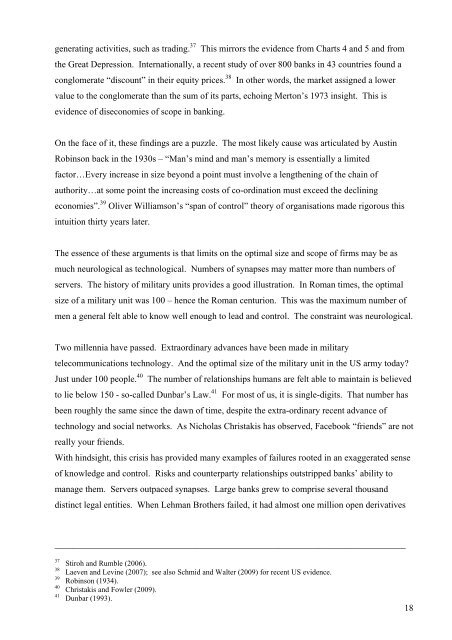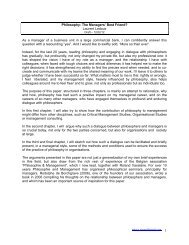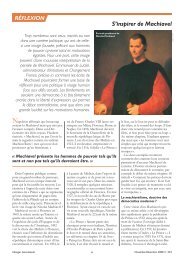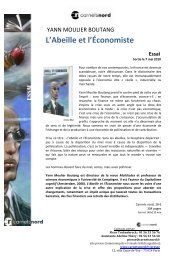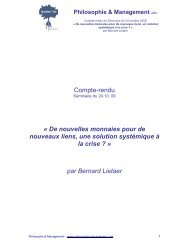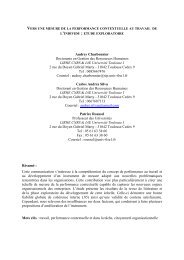The $100 billion question - Signal Lake Venture Fund
The $100 billion question - Signal Lake Venture Fund
The $100 billion question - Signal Lake Venture Fund
You also want an ePaper? Increase the reach of your titles
YUMPU automatically turns print PDFs into web optimized ePapers that Google loves.
generating activities, such as trading. 37 This mirrors the evidence from Charts 4 and 5 and from<br />
the Great Depression. Internationally, a recent study of over 800 banks in 43 countries found a<br />
conglomerate “discount” in their equity prices. 38 In other words, the market assigned a lower<br />
value to the conglomerate than the sum of its parts, echoing Merton’s 1973 insight. This is<br />
evidence of diseconomies of scope in banking.<br />
On the face of it, these findings are a puzzle. <strong>The</strong> most likely cause was articulated by Austin<br />
Robinson back in the 1930s – “Man’s mind and man’s memory is essentially a limited<br />
factor…Every increase in size beyond a point must involve a lengthening of the chain of<br />
authority…at some point the increasing costs of co-ordination must exceed the declining<br />
economies”. 39 Oliver Williamson’s “span of control” theory of organisations made rigorous this<br />
intuition thirty years later.<br />
<strong>The</strong> essence of these arguments is that limits on the optimal size and scope of firms may be as<br />
much neurological as technological. Numbers of synapses may matter more than numbers of<br />
servers. <strong>The</strong> history of military units provides a good illustration. In Roman times, the optimal<br />
size of a military unit was 100 – hence the Roman centurion. This was the maximum number of<br />
men a general felt able to know well enough to lead and control. <strong>The</strong> constraint was neurological.<br />
Two millennia have passed. Extraordinary advances have been made in military<br />
telecommunications technology. And the optimal size of the military unit in the US army today?<br />
Just under 100 people. 40 <strong>The</strong> number of relationships humans are felt able to maintain is believed<br />
to lie below 150 - so-called Dunbar’s Law. 41 For most of us, it is single-digits. That number has<br />
been roughly the same since the dawn of time, despite the extra-ordinary recent advance of<br />
technology and social networks. As Nicholas Christakis has observed, Facebook “friends” are not<br />
really your friends.<br />
With hindsight, this crisis has provided many examples of failures rooted in an exaggerated sense<br />
of knowledge and control. Risks and counterparty relationships outstripped banks’ ability to<br />
manage them. Servers outpaced synapses. Large banks grew to comprise several thousand<br />
distinct legal entities. When Lehman Brothers failed, it had almost one million open derivatives<br />
_____________________________________________________________________________<br />
37<br />
38<br />
39<br />
40<br />
41<br />
Stiroh and Rumble (2006).<br />
Laeven and Levine (2007); see also Schmid and Walter (2009) for recent US evidence.<br />
Robinson (1934).<br />
Christakis and Fowler (2009).<br />
Dunbar (1993).<br />
18


